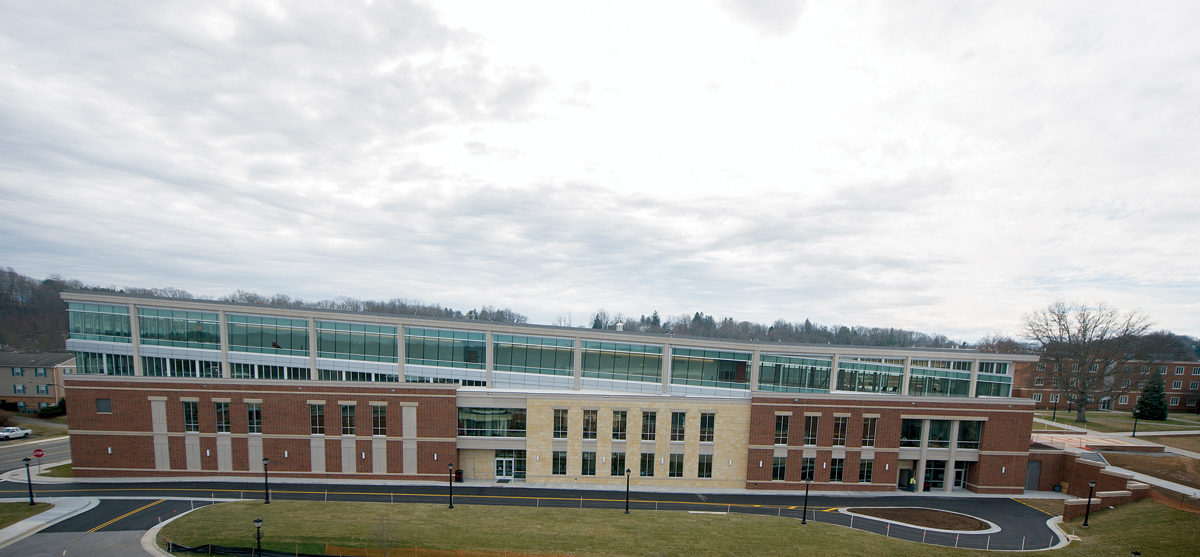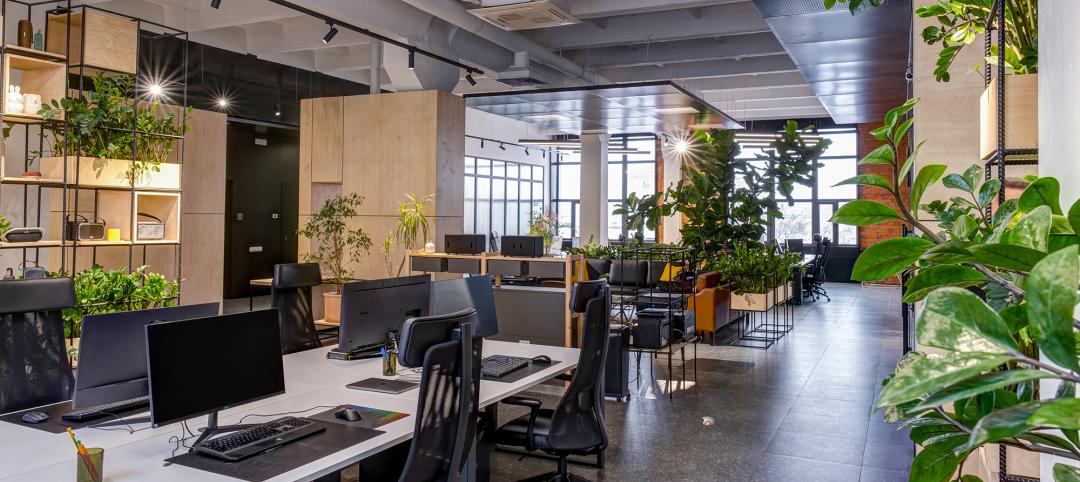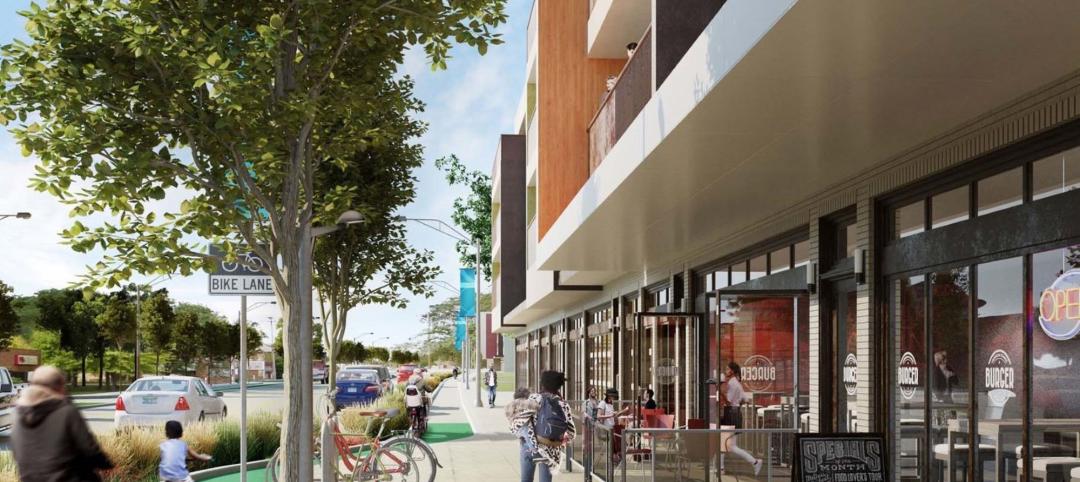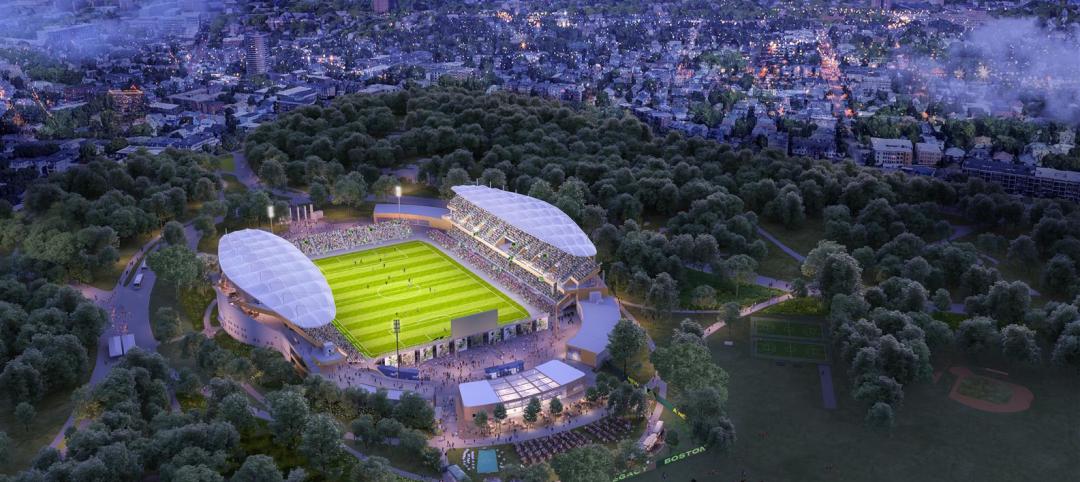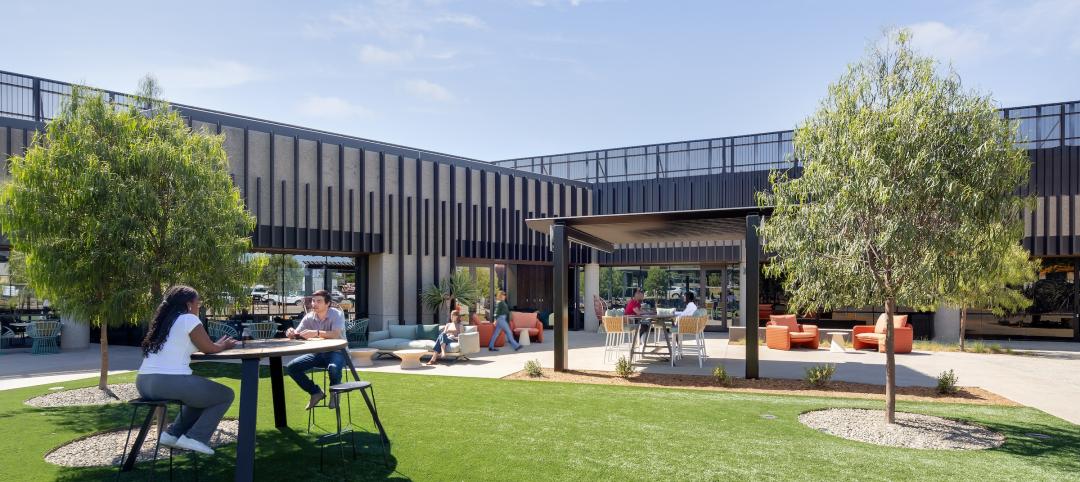College and universities are in an arms race to build facilities and campuses that will attract and retain the best and brightest students. Radford University’s new Fitness and Wellness Center is a prime example of the level of sophistication and innovation that goes into creating a world-class facility in today’s fierce college market.
The Radford, Va., university wanted a showcase facility that would make a grand design statement on the 9,900-student campus and reinforce the ideas of transparency and connection. The Building Team, led by Worley Associates Architects (designer) and Skanska USA Building (CM), responded with a four-level plan that utilizes a series of interconnecting atrium spaces, mezzanines, bridges, and freestanding stairs to create an open, bright, high-energy environment.
The facility’s signature element, a sloped running track on the mezzanine levels that offers a 360-degree view of the campus, is expressed on the building’s north elevation through a glass curtain wall system and roofline that are sloped to match the incline of the track. Steel tube hangers and beams suspend the circular track over the third and fourth levels. The track runs along the first and second mezzanine, sloping up from level two to level three and then back down again.
PROJECT SUMMARY
BRONZE AWARD
Radford University Fitness and Wellness Center
Radford, Va.BUILDING TEAM
Submitting firm: Skanska USA Building (CM)
Owner: Radford University
Architect: Worley Associates Architects
SE: Dunbar Milby Williams Pittman & Vaugh
MEP engineer: Dunlap & Partners EngineeringGENERAL INFORMATION
Project size: 114,000 sf
Construction cost: $27 million
Construction period: March 2013 to November 2014
Delivery method: CM at risk
Pulling off the open-concept design required clever solutions by the Building Team. The suspended track scheme called for the use of an intumescent fire coating that expands when heated to protect the structure in case of fire. Due to expansion allowances, the builders could not attach the C-channel track edge to the steel tube hangers. Their solution: cut the C-channel track edges by four inches and fill the gap with several different layers of wood trim to create a seamless appearance. The track hangers were then skimmed smooth with drywall mud and painted to create a finished look.
The building’s sloped EPDM roof and mix of exterior components—glass curtain wall, GFRC infill panels, EIFS, metal panels, brick masonry veneer, and decorative masonry veneer—required close coordination of the design and construction teams. The roof has seven distinct elevations and a number of complex curtain wall angles that required precise field measurements prior to ordering the specialized pieces.
To keep the project on schedule, the team divided the curtain wall into three special orders—each with a four-week lead time—which allowed the field measurement work and structural steel framing installation to occur simultaneously. The eight-month curtain wall installation required close collaboration of five trades.
The Building Team Awards judges commended the project team for its problem solving and attention to detail in creating Radford’s new campus landmark.
“The inclined running track in itself is a unique attribute, but to have the building’s exterior physically express it as well is outstanding and simply good design,” said one of the judges, Susan Heinking, AIA, NCARB, LEED AP O+M, Vice President and Sustainability Leader with VOA Associates.
Related Stories
MFPRO+ New Projects | Oct 30, 2024
BIG’s One High Line finally reaches completion in New York City’s West Chelsea neighborhood
One High Line, a luxury residential project spanning a full city block in New York’s West Chelsea neighborhood, reached completion this summer following years of delays related to investor lawsuits.
Urban Planning | Oct 30, 2024
Bridging the gap: How early architect involvement can revolutionize a city’s capital improvement plans
Capital Improvement Plans (CIPs) typically span three to five years and outline future city projects and their costs. While they set the stage, the design and construction of these projects often extend beyond the CIP window, leading to a disconnect between the initial budget and evolving project scope. This can result in financial shortfalls, forcing cities to cut back on critical project features.
MFPRO+ New Projects | Oct 30, 2024
Luxury waterfront tower in Brooklyn features East River and Manhattan skyline views
Leasing recently began for The Dupont, a 41-story luxury rental property along the Brooklyn, N.Y., waterfront. Located within the 22-acre Greenpoint Landing, where it overlooks the newly constructed Newtown Barge Park, the high-rise features East River and Manhattan skyline views along with 20,000 sf of indoor and outdoor communal space.
Libraries | Oct 30, 2024
Reasons to reinvent the Midcentury academic library
DLR Group's Interior Design Leader Gretchen Holy, Assoc. IIDA, shares the idea that a designer's responsibility to embrace a library’s history, respect its past, and create an environment that will serve student populations for the next 100 years.
Resiliency | Oct 29, 2024
Climate change degrades buildings slowly but steadily
While natural disasters such as hurricanes and wildfires can destroy buildings in minutes, other factors exacerbated by climate change degrade buildings more slowly but still cause costly damage.
Office Buildings | Oct 29, 2024
Editorial call for Office Building project case studies
BD+C editors are looking to feature a roundup of office building projects for 2024, including office-to-residential conversions. Deadline for submission: December 6, 2024.
Healthcare Facilities | Oct 28, 2024
New surgical tower is largest addition to UNC Health campus in Chapel Hill
Construction on UNC Health’s North Carolina Surgical Hospital, the largest addition to the Chapel Hill campus since it was built in 1952, was recently completed. The seven-story, 375,000-sf structure houses 26 operating rooms, four of which are hybrid size to accommodate additional equipment and technology for newly developed procedures.
Multifamily Housing | Oct 28, 2024
A case for mid-rise: How multifamily housing can reshape our cities
Often referred to as “five-over-ones,” the mid-rise apartment type is typically comprised of five stories of apartments on top of a concrete “podium” of ground-floor retail. The main criticism of the “five-over-one” is that they are often too predictable.
Sports and Recreational Facilities | Oct 24, 2024
Stadium renovation plans unveiled for Boston’s National Women’s Soccer League
A city-owned 75-year-old stadium in Boston’s historic Franklin Park will be renovated for a new National Women’s Soccer League team. The park, designed by Fredrick Law Olmsted in the 1880s, is the home of White Stadium, which was built in 1949 and has since fallen into disrepair.
Laboratories | Oct 23, 2024
From sterile to stimulating: The rise of community-centric life sciences campuses
To distinguish their life sciences campuses, developers are partnering with architectural and design firms to reimagine life sciences facilities as vibrant, welcoming destinations. By emphasizing four key elements—wellness, collaboration, biophilic design, and community integration—they are setting their properties apart.


